The Lakeside daisy is Ohio’s rarest, native plant species. This plant only grows in four areas. Its largest population is in Ohio’s Marblehead peninsula, part of Ottawa County. This is where the Lakeside Daisy State Nature Preserve is located. Lakeside daisies are also found in Michigan’s upper peninsula, and in Ontario, Canada they can be found in the Bruce Peninsula and Manitoulin Island.
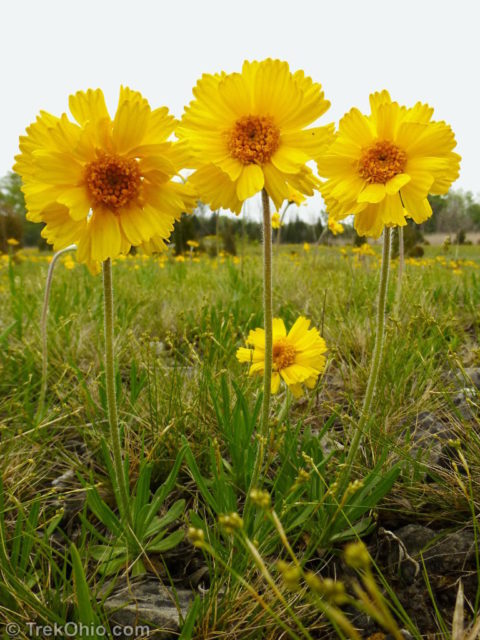
Lakeside daisies are the only representatives of their genus that live east of the Mississippi. Eight thousand years ago the climate in North America became hotter and drier (the Xerothemic interval). During this time a lot of drought-resistant, prairie plants moved eastward, including the ancestor of the Lakeside Prairie. Then around 4,000 years ago, it started getting cooler and wetter in eastern North America. Lots of drought-tolerant plants died out, but the ancestor of the Lakeside daisy persisted in a few, isolated pockets where it evolved into a unique species.
The most striking quality of this species is its ability to grow in full sunlight on nearly barren, limestone bedrock. When bare limestone or dolomite lies exposed on the ground’s surface, it’s called alvar. The natural alvar that once existed here was removed via quarrying by the Standard Slag Company. However 19 acres of this abandoned quarry was acquired by the state of Ohio and made into a dedicated state nature preserve in 1988. Sometime after the preserve’s dedication, it was renamed the Lakeside Daisy Ruth E. Fiscus and Colleen “Casey” Taylor State Nature Preserve because both Fiscus and Taylor had worked so hard in trying to protect the Lakeside daisy population on the Marblehead peninsula.
Since the quarry was abandoned, some soil has developed over the bedrock. Here’s what the land looks like now.
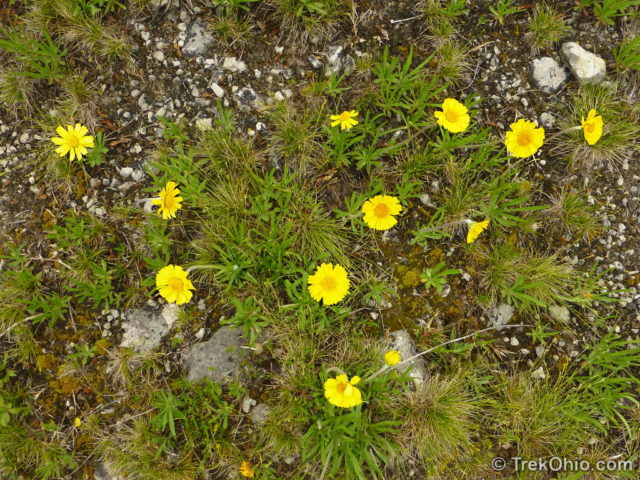
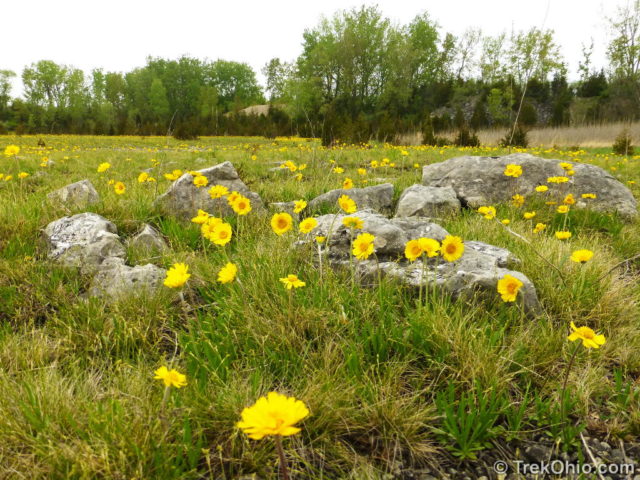
Near the entrance there is a little bench. Seeing the flowers sprouting around the quarry debris reminded me of a rock garden.
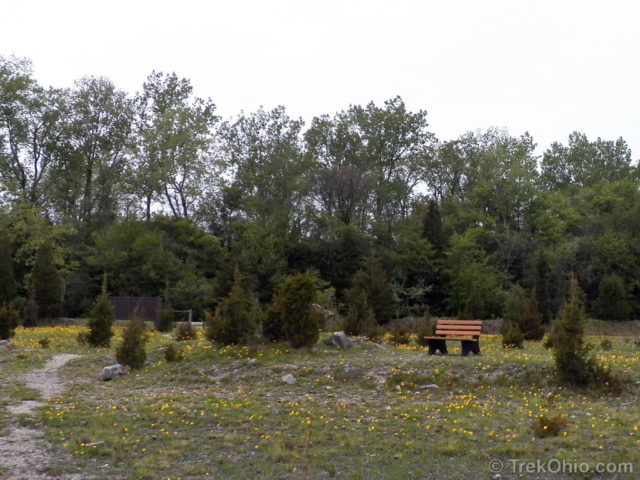
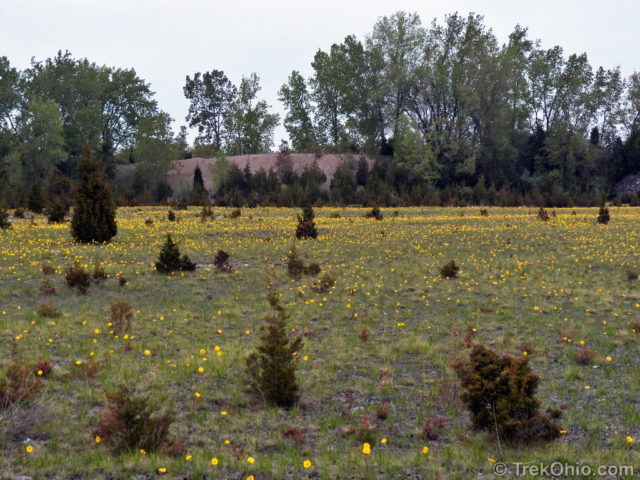
The whole time we were there we could hear killdeer calling. A killdeer is a type of bird that lives near shorelines and in meadows. Since the preserve had small pools of water and since preserve is located on a peninsula in Lake Erie, it was a great site for the killdeer. We saw them darting among the daisies looking for food.
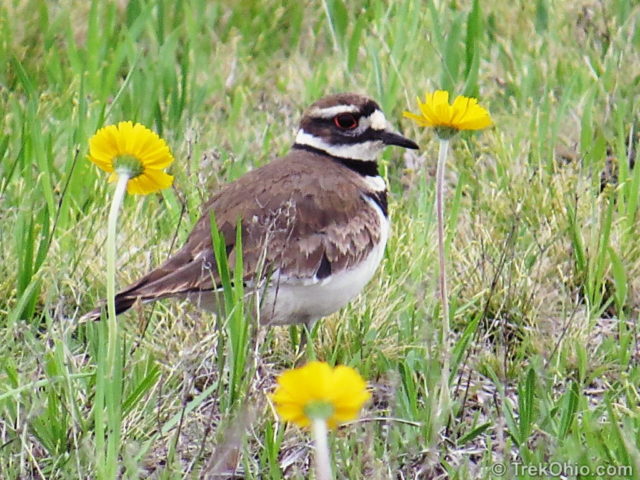
Although the daisies were sprinkled about most of the preserve, occasionally we discovered thicker clusters.
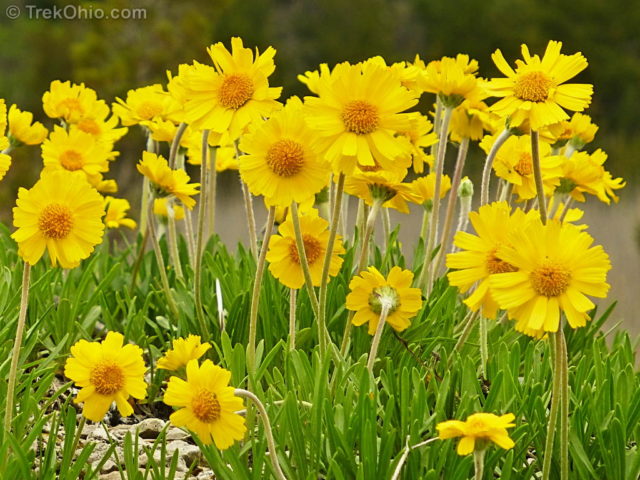
Here’s a look at the daisy’s face. Although the background is out of focus, you can see how rocky the ground is to the left of the flower.
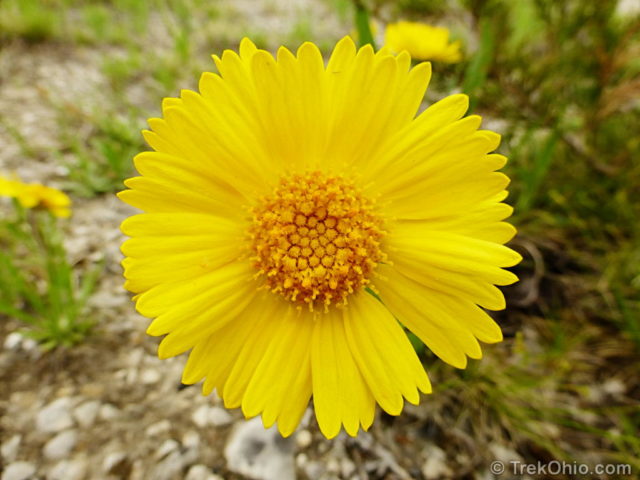
While walking around the preserve, I encountered the double-flowered mutant shown below. A double-flowered variety of a flowering species is one that has extra layers of petals. I photographed this one at an angle to show the extra petals.
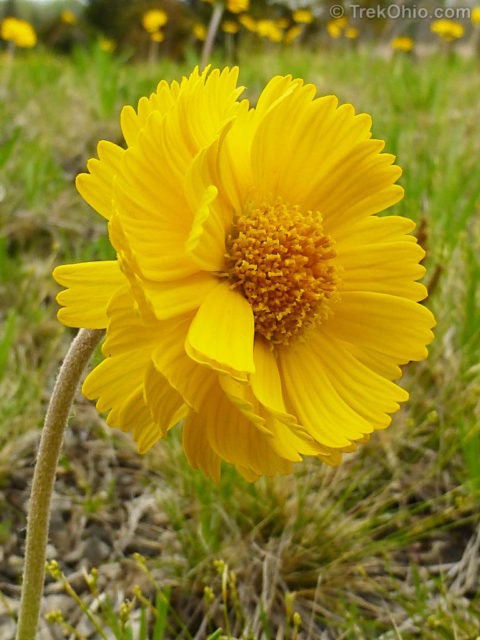
And for comparison, this is what a normal Lakeside daisy looks like from the side.
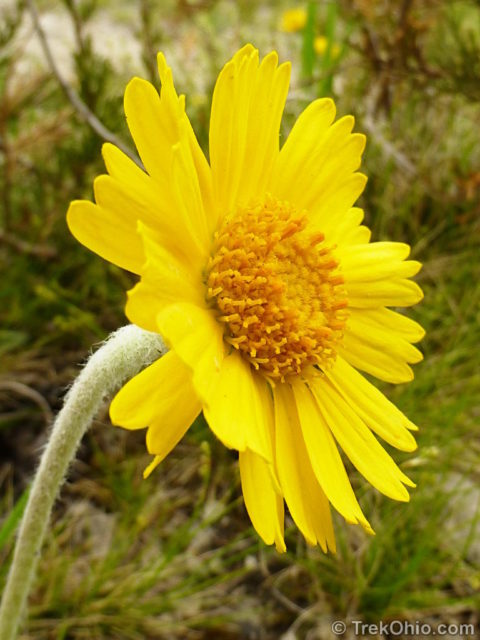
The sad thing about this daisy is the fact that it only blooms for about a week, and all of the flowers tend bloom at the same time. We took the photos that you see here yesterday (May 11, 2013); if you’d like to see Lakeside daisies this year, you would need to make a trip to the Lakeside Daisies State Nature Preserve relatively soon. Documentation at the preserve said that the flower typically goes to seed by early June. We spoke to other visitors at the preserve on Saturday who told us they had tried to see the flowers last year by arriving in late May, but this had been too late.
However once the season for Lakeside daisies are over, there are other, rare flowers that bloom at this preserve including:
- Rock sandwort (Arentaria stricta)
- Balsam squaw-weed (Senecio pauperculus), and
- Great Plains Ladies’-tresses (Spiranthes magnicamporum)
More common, summer flowers include Spiked blazing star (Liatris spicata) and stiff goldenrod (Solidago rigida).
The preserve is also home to a number of rare sedges (to the non-botanist, these are grass-like plants). Visitors should keep to the path in the preserve. If you do go off this path, it is important to step very carefully to avoid damaging these special plants.
Update: Sept. 3, 2015
The Ohio Department of Natural Resources recently published a short video describing why the lakeside daisy is so special. I’ve embedded it below.
Additional information
- TrekOhio: Ottawa County Parks & Nature Preserves — This is the county where the Lakeside Daisy State Nature Preserve is located. Check out this page for links to the official site and for information on nearby parks and preserves.
- Wikipedia: Tetraneuris herbacea; this is the scientific name that Wikipedia uses to refer to Lakeside daisies (Hymenoxys herbacea)
- Wikipedia: Double-flowered: this is a mutation that causes a flower to have extra layers of petals.
- Wikipedia: Alvar; this is a habitat characterized by either bare, limestone bedrock or bedrock covered with a scant layer of top soil.
Location
The entrance to the preserve is located at the intersection of E. Bayshore Road and Alexander Pike in Lakeside Marblehead, OH 43440. According to a sign at the park, it is only open to the general public in the month of May. The sign says that during the rest of the year, people must request a permit from the Ohio Department of Natural Resources. However, I believe this information is out-of-date. A number of preserves that required a permit no longer do. And if you look at the state’s list of permit-only preserves, you’ll find that the Lakeside Daisy State Nature Preserve is not included.
From E. Bayshore Rd., turn onto Alexander Pike. Off of Alexander Pike, you’ll eventually come to the preserve’s entrance for visitors. It looks like this.
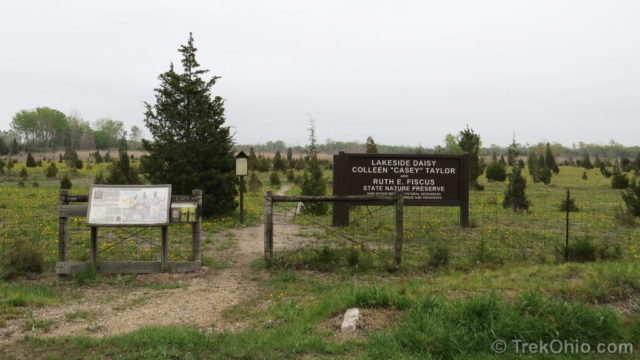
There is an area to the side of the road near the entrance where you can pull over and park.
More on Ottawa County
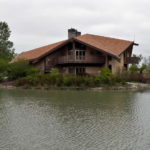
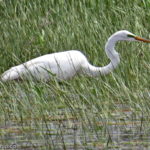
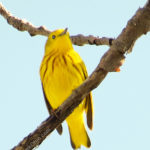
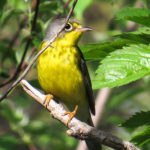
Beautiful photos, Deb! What a neat experience…
Interesting. Seems like most spring flowers here in SE Ohio were a week late. ODNR is one of the pages we visit regularly! Thank You!
When is the best time for peak bloom. I know its in May but what part of the month would be best.
Brett, typically Lakeside daisies bloom early to mid-May. Bob was looking into it on the web, and he found that it bloomed a week earlier the year before (it was blooming May 4th then). Since it only blooms about a week, it’s easy to get there too early, or too late. I was able to time our visit correctly this year because ODNR posted this status update announcing that it was in bloom at the Facebook page for the Ohio Division of Natural Areas and Preserves.
B-E-A-U-T-I-F-U-L!!!!!
🙂
Beautiful pictures, Deb! What a privilege to be able to enjoy a hike in such a surrounding of astounding loveliness. 😉
The yellow daisies are so pretty sprinkled everywhere. And the Killdeer shot with them is a keeper, what a photo op! 🙂
Wonderful photos from Lakeside daisies. Lakeside daisy seems to be so beautiful that I would be happy to see it here, but it is not possible. Sigh.
Oh my…. Just love it! I adore the bird among the daisies. Me and my giant daisy tattoo *must* make a special visit to this wonderful place.
It was a longish way to drive to see a daisy, but I’m glad we did. If you were here, we would have taken you along. Anyone with a flower daisy tattoo should see it. 🙂
Great shots. I have always found the colour yellow challenging to capture.And that is a short season.
Thanks, Jane! I’m glad we were able to travel there during the height of the bloom.
I’ve had cameras that have difficulty auto-focusing on white and yellow flowers. But I currently have a Panasonic Lumix point-and-shoot that will do macro shots of any flower regardless of color. So now my most challenging color is white because I need to lower the exposure value to keep from blowing out the white.
It is good that you know how to do the adjustments to compensate for the blow-out factor.Have an enjoyable weekend in the great outdoors.:)
Great photos Deb! I’ve always heard about this unique place and I was a Reclamation Inspector over one of Standard Slag’s mining operations in Pike County Ohio. So sad that Ohio’s laws were not stringent enough to protect unique sites like this.
Thanks, Jill! I didn’t know that you were a Reclamation Inspector. The good news about the Lakeside Daisy State Nature Preserve is that it seems to be bouncing back from the quarrying activity. I’m glad that we were able to get up there while the Lakeside Daisy was in bloom. We combined this trip with a visit to the Marblehead Lighthouse (practically next door!) and Magee Marsh.